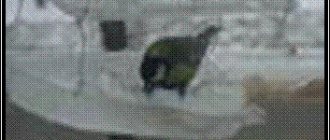Review of a student's research paper
REVIEW OF RESEARCH
STUDENT'S WORK
Review
educational research is prepared by a teacher who is a consultant and supervisor of the student’s work. The review is written by the supervisor after reviewing the final version of the educational research, no later than a month before the student research conference in which the student intends to participate.
The reviewer of a scientific research can be not only a teacher, but also representatives of other scientific institutions and institutions that participated in the analysis of the student’s research work. In this case, the student can submit several reviews of the same research to the conference jury.
The volume of the review should not exceed two printed pages.
Main review criteria
student research work (NIRU)
1.
Formulation of the theme of NIRU
- The formulation of NIRU is not literate enough.
— The formulation of the NIRU meets the requirements of abstract work.
— The formulation of the NIRU meets the requirements of the research work.
2.
Relevance of NIRU
- The relevance of NIRU does not meet the requirements of the time.
— The relevance of NIRU does not quite meet the requirements of the time; some provisions are outdated.
— The problem is very relevant in modern conditions, its consideration has a certain scientific interest in research circles.
3.
The purpose and objectives of the NIRU
- The purpose and objectives of the NIRU do not correspond to the stated research topic.
— The purpose and objectives of the NIRU correspond to the topic of the study, but do not fully disclose it.
— Some tasks are defined superficially and formally.
— The purpose and objectives of NIRU are adequate to the theme of NIRU, formulated competently and informally.
4.
Depth and quality of the studied specialized literature
- Students have studied an insufficient amount of literature on this problem, used a large number of Internet sources, which does not make it possible to qualitatively analyze the research topic, determines the author’s formal approach to studying the literature on the problem.
— The author has studied the main sources of literature on the problem, given a brief analysis of them, however, there is no comparative analysis of literary sources on this problem.
— The author has analyzed a sufficient number of literary sources on the problem under study, given their comparative analysis, identified literary sources and authors who have come closest to understanding and analyzing this problem from the author’s position.
5.
Theoretical conclusions of NIRU
- The student’s work does not contain any theoretical conclusions on the problem being studied; the nature of the author’s thoughts is superficial.
— The student’s work has a theoretical basis, but all possible conclusions have not been drawn.
— All the author’s theoretical positions and conclusions are justified, logical and correspond to the course of theoretical reflection within the framework of the problem being studied.
6.
The quality of the experimental part of NIRU
- The experimental part is not presented in the student’s study; descriptions of research on this problem from theoretical literature are given, which indicates the author’s formal approach to his research.
— The experimental part is presented, but its description does not correspond to the conclusions presented in the study and represent a superficial statement of facts on the research topic.
— The experimental part has a certain scientific interest, because it confirms the theoretical positions of the author of the study, is informal in nature, and reflects the results of multiple educational experiments conducted by the author.
7.
The structure of NIRU (number of chapters, paragraphs, the presence of an experimental part, applications)
- The structure of NIRU does not correspond to logic, there are no chapters such as..., there are no conclusions in the work, there are no materials from the author’s own experimental research.
— The structure of NIRU corresponds to logic, but some chapters are examined superficially, there is no analysis of the literature used by the author in the work.
— The structure of NIRU corresponds to logic, ensures its development as much as possible, each subsequent position logically follows from the previous one. The list of references is compiled in accordance with the requirements for writing NIRU.
8.
NIRU Appendix
- The work does not contain any appendices that the author provides as confirmation of his research.
— The work presents applications, the content of which has little relevance to the topic of research; their descriptive part is practically absent.
— The applications presented by the author clearly illustrate the theoretical materials of the study and logically reflect the author’s practical work on the problem studied.
9.
The language of NIRU
- The language of NIRU does not correspond to the norms of scientific prose; there are errors in terminology on the problem studied.
— The language of NIRU corresponds to the norms of scientific prose, but the necessary terminology is not fully presented.
— The language of NIRU corresponds to the norms of scientific prose and deserves high praise; the terminology of the studied topic is presented in full.
10.
Quality of design of educational research
- The quality of design of scientific research does not meet the requirements, design errors were made throughout the structure of the NIRU.
— The quality of the scientific research design does not fully meet the requirements, errors in the design were made throughout the entire structure of the NIRU, the work does not contain a complete list of references on the research materials.
— The quality of the scientific research design fully complies with the requirements, the work presents a complete list of references on the research materials, the work presents a complete list of references on the research materials, the practical part of the study is described in full.
11.
Suggestions for improving NIRU:
- It is necessary to pay attention to...
- Preferably...
— In order to improve the quality of the theoretical part of the study, it is recommended...
- It would be appropriate...
- It’s absolutely necessary...
12. Other comments on NIRU:__________________________________
Based on the analysis of NIRU, the following conclusions can be drawn and the work assessed as ____________________________________________
Reviewer_________________________________________________________
Example of a review of a student's educational research
Review
Researcher at the Institute of History of the Russian Academy of Sciences, candidate of historical sciences for research work, student of the Berezovsky secondary school, Krasnodar region Vadim Pavlovich Petrov.
The topic of the research is
“Historical and archival research into the life and work of a WWII participant, defender of Brest.”
Head of educational research:
history teacher at Berezovsky secondary school.
The author's historical and archival research is dedicated to the WWII participant, the defender of Brest.
The purpose of this study was to study the pre-war situation in Europe on the eve of the Second World War using the example of one biography of a participant in the events of those years.
The author showed the events of the pre-war years through the fate of a private in the Red Army, a communist, a man devoted to his Motherland and who fulfilled his duty as a citizen of the country to the end.
The author of the study has done a lot of archival work: studied materials related to the events of the country, materials related to the places of residence of the person to whom the study is dedicated. Much attention is paid to the study of historical materials and publications devoted to the domestic and foreign policies of the USSR and Germany in this historical period.
The author studied in detail historical and archival sources of a critical nature (12 units), carried out an analysis of various opinions, points of view, views on the historical period discussed in the study.
In the work of the author of the study, interesting visual material is described and used; its volume is 28 pages, which indicates the author’s interest in his chosen topic.
Get full text
In addition to archival research, the author provides documentary materials: interviews with eyewitnesses of those events, their memories, which significantly complements the theoretical material of the study.
The author competently structured his research. The work consists of an introduction, two chapters, a conclusion, and an appendix using research material.
In the introduction, the author provides a rationale for the choice of topic, provides arguments indicating the significance of this research, and shows the need to carry out such work in order to increase the patriotism of modern youth.
The theoretical analysis provides an overview of literary research on this issue by various authors, a comparison and analysis of their points of view, and an attempt to make one’s own analysis of the presented literature. In the work, the author used literary sources in a foreign language (German), which indicates the depth of the author’s interest in this topic, his erudition, and a serious approach to scientific research.
In conclusion, the author gives his own conclusions on the problem under study, shows possible ways for students to continue working on this topic, shows the significance of this work not only for the person discussed in the study, but also for many people whose names are unknown in the archives or little-studied names.
The significance of this work lies in the fact that, using the example of a single individual, it examines and examines an entire historical period in the history of the state. This work is relevant, it serves as a vivid example of the attitude of the younger generation to the historical heritage of our country, its past, its people who have made the glory of the state with their exploits and their selfless service to the Motherland.
The work of Vadim Pavlovich Petrovo meets the requirements for educational research and deserves high praise.
02/21/2010 Signature of the review author
Print location
How to write a review of a student’s final individual project?
The development provides recommendations for writing a review of an individual final project of a 9th grade student and an approximate text of the review itself.
View the contents of the document “How to write a review of a student’s final individual project?”
Recommendations for writing a review
for the student’s final individual project
When submitting individual final projects (IIP) for students under the Federal State Educational Standard of LLC for preliminary examination, the mandatory documents attached to the IIP are a review by the work supervisor and/or a review by an external reviewer.
The review of the project contains:
name, purpose, author of the project
educational area and subjects covered in this project
methods used in the project
relevance of the chosen topic and its practical significance
level of presentation of the material (accessibility, scientific nature, logic).
How to write a review of a project work?
The work being reviewed by ____________________________ author __________________________________________ was carried out as part of a project, immersion, workshop, etc. and dedicated, directed...
Relevance of the topic (the problem posed in the work, attempts to solve it)
How is the author trying to solve this problem (fulfill the goal). Summary of the work, Main conclusions, results of the work.
How to submit a review of a monograph
As a general rule, a review is written in about 4 thousand characters (with spaces). In conclusion, the reviewer must write recommendations for publication or indicate the impossibility of publishing the material. The reviewer's negative decision must be motivated. Next, the reviewer’s signature and the corresponding seal are affixed.
A copy of a monograph review sent by email is not an original document. Some editions require the original
An objective assessment of the research is necessary; the strengths of the scientific text, as well as shortcomings, are stated.
The advantages, as a rule, are a logical and consistent presentation of the essence of the research, innovation in solving the problem, and the ability to convey the essence of scientific results in an understandable form.
An example of a fragment of a review of a monograph on the topic “Rehabilitation as an Institute of Russian Law.”
“...The result of the peer-reviewed study was the following conclusions. At the moment, there are prerequisites for establishing in Russian legislation the mechanisms of rehabilitation and its material and legal basis and the formation of an appropriate intersectoral institution. As a procedural basis, it is possible to use mechanisms of administrative procedural legislation similar to those used to restore the rights of persons deprived of the right to legal proceedings within a reasonable time or the right to execute a judicial act within a reasonable time. The author accurately noted that the rules of substantive law that allow the use of both simplified and claim procedures, the obligation of the state (as a general rule) to return (with interest accrued on them) paid funds when there are no grounds for withholding them can be contained in industry legislation or in special law on rehabilitation. The author’s opinion radically changes the methodology for systematizing these norms..."
Sample review of a monograph
Sample review of a monograph
In order for the review to be a stylistically competent document, we recommend using the following phrases:
- the significance of this work is undeniable...
- The author covers the problem in detail...
- The author expressed his point of view...
- the work was done to a high standard...
- The study is an example of an in-depth study of the problem...
- It is necessary to note the emphasis placed by the author...
- The essence of this research is that...
General requirements for reviewing scientific work
A review of a scientific work is not only an assessment that helps the author see the advantages and disadvantages of his work, it is also a document that is submitted along with the scientific work to the reaction or defense commission.
The review requires a scientific style of presentation
You cannot neglect such general requirements for a review as:
- laconicism;
- scientific style of presentation;
- unambiguity of reasoning and final assessment of work;
- clear argumentation of the reviewer’s position;
- structure;
- correctness in relation to the author of the analyzed work.



